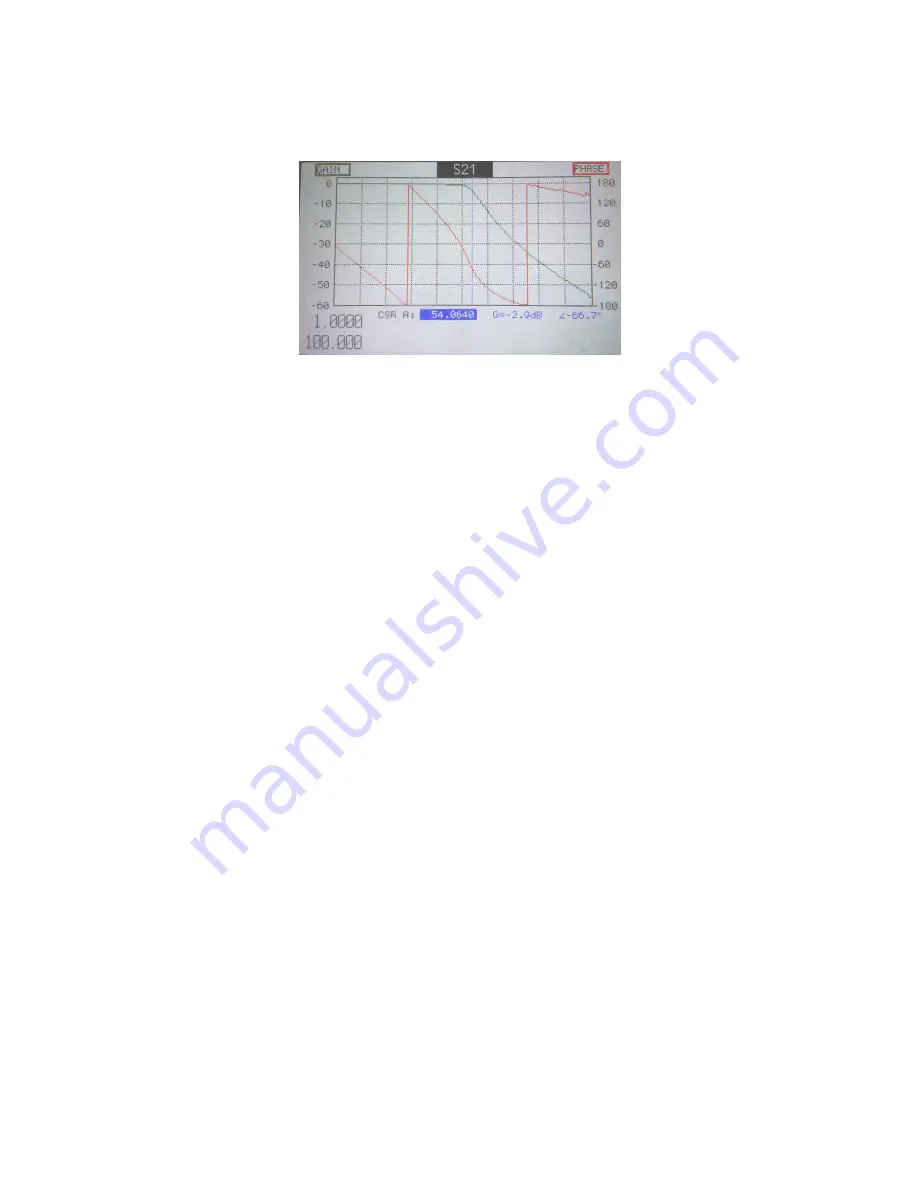
18
S21 (Two-Port) VNA Screen
The S21 VNA Screen shown above illustrates how the BRAVO EX2's Two-port capabilities can be
used to analyze a two-port device; in this case, a low pass filter. Unlike for a single-port
measurement, the parameters measured cannot be changed: This always displays GAIN and PHASE
(although, the phase trace can be turned off). The cursors work the same as for a single-port
measurement.
Please note, only measurements on passive devices are currently supported. As is the case with the
VNA screen, the UP arrow will select the scale on either side. Selecting the right scale then pressing
<ENTER> turns the PHASE trace on and off, which can be useful if only magnitude information is
needed.
Standard S
21
Measurement Procedure:
Press <FREQ>, enter the desired frequency range. If you're running frequency-specific calibrations,
you will be prompted to do the usual OPEN-SHORT-LOAD calibration process, same as SWR, RL,
FDR, etc.
Once the O-S-L part of the calibration is completed (assuming you're using frequency-specific
calibrations), you will then be prompted to attach what's referred to as the THROUGH cable. This
cable should be a loop of all of the cabling that will be used to attach the UUT to the instrument. This
loop is attached to the S
11
port of the instrument on one end, and the instruments' S
21
port on the
other end. Press <ENTER> to calibrate the THROUGH. This will compensate for any losses in the
test leads. The magnitude should now show a FLAT trace at 0dB, and a FLAT phase trace at close
to 0°.
When the calibration process is complete, attach the test leads to your device, and adjust the scales
to best view the traces. Depending on what type of device you're measuring, you should get a result
similar to the above photograph.
Calibration, Measurement Information and Helpful Tips
Calibration Processes
The BRAVO EX2 has two types of calibrations; Broadband and Frequency Specific.
Broadband
is a calibration that is done once,
using the Site Analyzer’s entire frequency range
100KHz to 525MHz and saved for use with any shorter frequency ranges selected for use. The
advantage of using Broadband Calibration is calibrating once for every change of frequency. It can
also include any combination of test leads or adapters, effectively removing them from the
measurements. However, that same test lead / adapter combination MUST be used with all SWR or
RL tests performed when Broadband Calibration is enabled. The disadvantage of using Broadband
Calibration is that it will not be quite as accurate as
Frequency Specific Calibration.






























